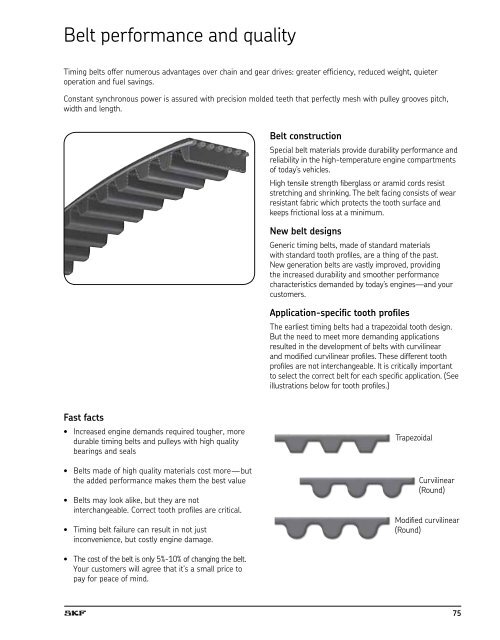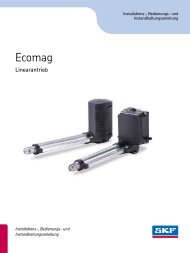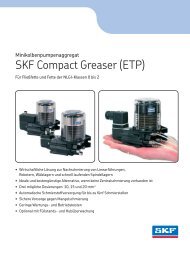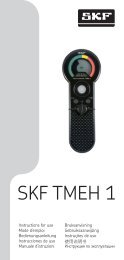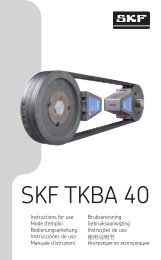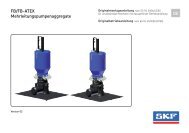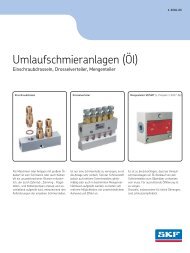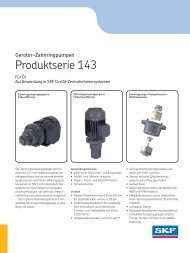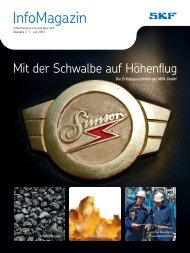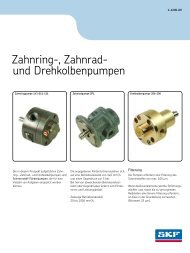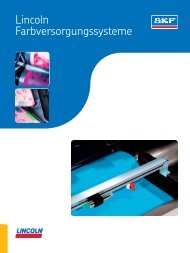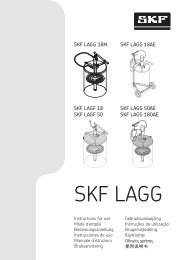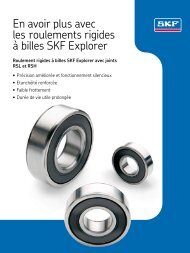SKF Timing Belt Kits - SKF.com
SKF Timing Belt Kits - SKF.com
SKF Timing Belt Kits - SKF.com
You also want an ePaper? Increase the reach of your titles
YUMPU automatically turns print PDFs into web optimized ePapers that Google loves.
<strong>Belt</strong> performance and quality<br />
<strong>Timing</strong> belts offer numerous advantages over chain and gear drives: greater efficiency, reduced weight, quieter<br />
operation and fuel savings.<br />
Constant synchronous power is assured with precision molded teeth that perfectly mesh with pulley grooves pitch,<br />
width and length.<br />
Fast facts<br />
• Increased engine demands required tougher, more<br />
durable timing belts and pulleys with high quality<br />
bearings and seals<br />
• <strong>Belt</strong>s made of high quality materials cost more—but<br />
the added performance makes them the best value<br />
• <strong>Belt</strong>s may look alike, but they are not<br />
interchangeable. Correct tooth profiles are critical.<br />
• <strong>Timing</strong> belt failure can result in not just<br />
inconvenience, but costly engine damage.<br />
• The cost of the belt is only 5%-10% of changing the belt.<br />
Your customers will agree that it’s a small price to<br />
pay for peace of mind.<br />
<strong>Belt</strong> construction<br />
Special belt materials provide durability performance and<br />
reliability in the high-temperature engine <strong>com</strong>partments<br />
of today’s vehicles.<br />
High tensile strength fiberglass or aramid cords resist<br />
stretching and shrinking. The belt facing consists of wear<br />
resistant fabric which protects the tooth surface and<br />
keeps frictional loss at a minimum.<br />
New belt designs<br />
Generic timing belts, made of standard materials<br />
with standard tooth profiles, are a thing of the past.<br />
New generation belts are vastly improved, providing<br />
the increased durability and smoother performance<br />
characteristics demanded by today’s engines—and your<br />
customers.<br />
Application-specific tooth profiles<br />
The earliest timing belts had a trapezoidal tooth design.<br />
But the need to meet more demanding applications<br />
resulted in the development of belts with curvilinear<br />
and modified curvilinear profiles. These different tooth<br />
profiles are not interchangeable. It is critically important<br />
to select the correct belt for each specific application. (See<br />
illustrations below for tooth profiles.)<br />
Trapezoidal<br />
Curvilinear<br />
(Round)<br />
Modified curvilinear<br />
(Round)<br />
75


